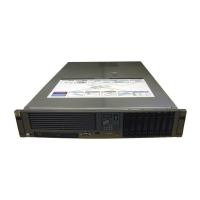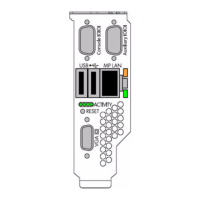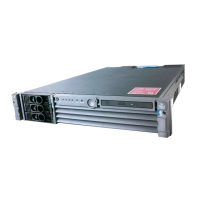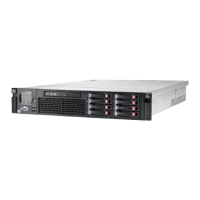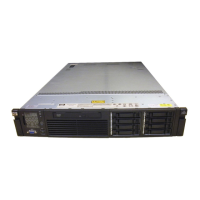Exit the SAS Configuration Utility Screen
As some changes only take effect when you exit the utility, it is important to always exit the utility
properly. To exit the utility, follow these steps:
1. To return to the Adapter List from Adapter Properties, press ESC.
2. To exit the utility from the Adapter List, press ESC.
NOTE: A similar exit screen is used when exiting most other screens, and can be used to save
settings.
The exit screen shows some options that are grey, indicating that they are not available. You can
only select the available options. The exit choices are as follows:
• Are you sure you want to exit?
• Cancel Exit
• Save changes and reboot
• Discard changes and reboot
• Exit the Configuration Utility and Reboot
CFGGEN Utility
The cfggen utility is a command line utility that runs in the Linux, EFI, and Windows Pre-Installation
(WinPE) environments. It is a minimally interactive program that you execute from a command line
prompt, or a shell script. The results from invoking this utility are communicated through the program
status value that is returned when the program exits. Use the cfggen utility to create IM storage
configurations on SAS controllers. Some cfggen commands work only with SAS adaptors in the
EFI environment.
Starting CFGGEN
Thecfggenutility is located on the HP IPF Offline Diagnostic and Utilities CD. To use cfggen,
follow these steps:
1. Insert the CD into the drive.
2. Boot the system to the EFI Shell prompt.
3. From the EFI Shell prompt, change to the CD drive.
shell> fs0: Enter
fs0:\>
4. Change to the directory that containscfggen.efi.
fs0:\> cd EFI\HP\TOOLS\NETWORK Enter
fs0: EFI\HP\TOOLS\NETWORK>
From this directory use cfggen.
CFGGEN Operation
The cfggen command is not case sensitive. You can enter cfggen commands and parameters
in uppercase, lowercase, or a mixture of the two. Use the following conventions in the command
descriptions:
• Text in italics must be entered exactly as shown on the command line
• Text surrounded by <> must be replaced with a required parameter
• Text surrounded by [ ] may be replaced by an optional parameter
• Parameters surrounded by {} must be entered one or more times, as appropriate for the
executed command
• Do not enter the command line definition characters (<>, [ ], and {}) on the command line.
60 Installing the System

